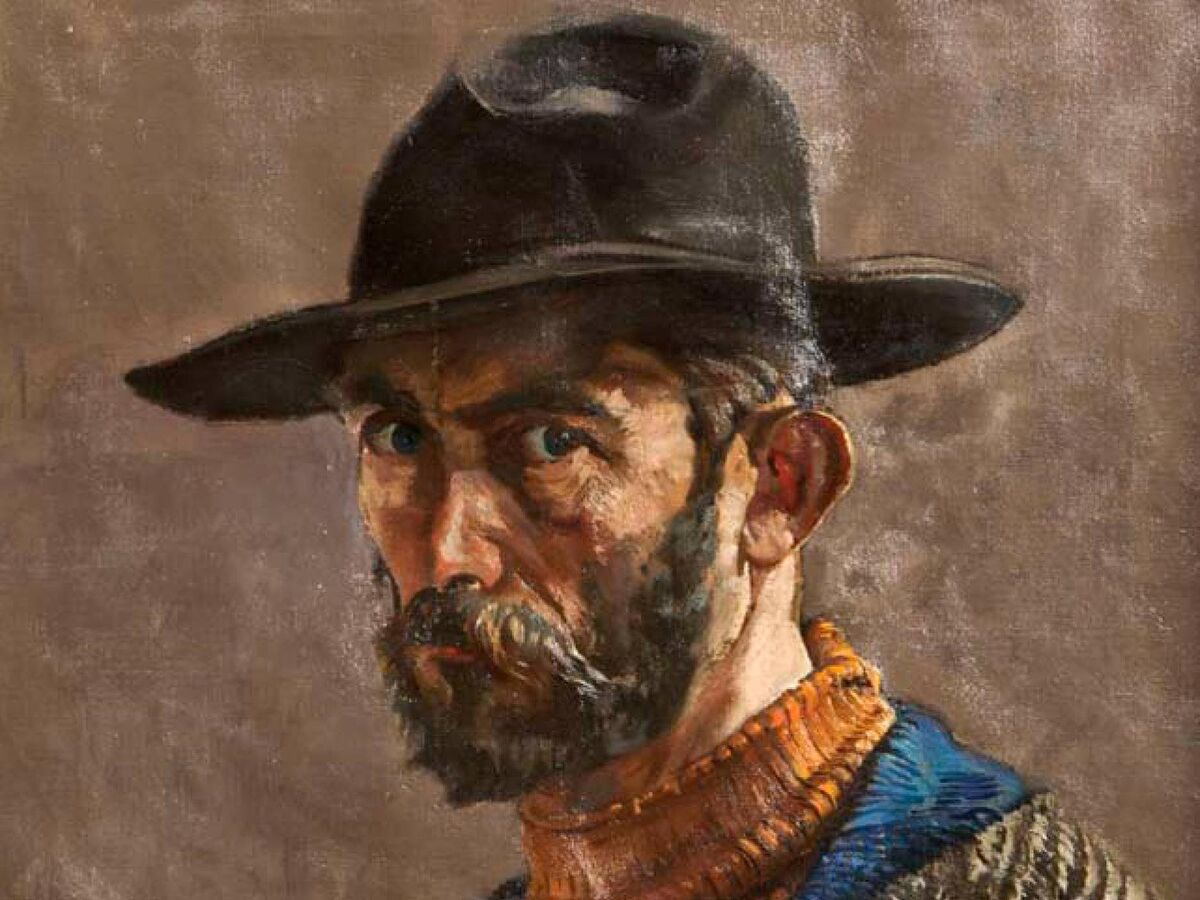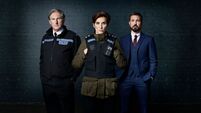Munster in 30 Artworks, No 22: The Tipperary Hurler, by Seán Keating

A detail from The Tipperary Hurler, by Sean Keating. (Picture courtesy of Hugh Lane Gallery, Dublin)
Tipperary is a county renowned for the prowess of its hurlers and the fierceness of its fighters in the War of Independence. It could be argued that both traditions are celebrated in Seán Keating’s painting, The Tipperary Hurler, for which he used two models, the sportsman John Joe Hayes and the former IRA man Ben O’Hickey.
Keating, from Limerick city, was a mercurial figure in the Irish art world. In Dublin, he served as Professor of Painting at the Metropolitan School of Art and was heavily involved in the Royal Hibernian Academy.
He had already produced a number of paintings with nationalist themes, including his portraits of IRA Volunteers, Men of the West and Men of the South, when he began work on The Tipperary Hurler.
“He started it in 1925, after Tipperary won the All-Ireland Championship,” explains Logan Sisley of Dublin City Gallery: The Hugh Lane, where the painting now hangs.
“Hayes was one of the star players, and Keating used him as the model. And then, for whatever reason, he abandoned work on the painting until 1928.

The art historian Eimear O’Connor was the one who discovered that Keating then asked O’Hickey to stand in for Hayes so he could complete the painting. The two are said to have looked very alike.”
Hayes remains a celebrated figure in GAA history. A native of Ballerk, near Thurles, he played senior hurling for Tipperary from 1917-27, usually at left corner-back, and also captained the Moycarkey-Borris team that won the county championship in 1926. Keating is said to have sketched him as he left the field after Tipperary’s All-Ireland triumph over Galway at Croke Park.
O’Hickey is more mysterious; a founding member of the IRA in Bansha, he fought throughout the War of Independence, served a prison sentence in England, and then returned to Ireland to study art at the Metropolitan School of Art in Dublin.
“O’Hickey was one of Keating’s students at the time he completed the painting,” says Sisley. “But we don’t really know what became of him as an artist.”
The hurler of Keating’s painting cuts an impressive figure, muscular and brooding. With the wild hills and turbulent sky at his back, he could be Cúchulainn, the hero of Irish legend.
“The Tipperary Hurler is a very modern painting,” says Sisley. “It presents a very energetic, and very positive, image of the strong, virile young athlete. But it does also seem to be evoking some heroic figure from the past, someone who is almost a universal figure.”
One of the striking details in the painting is the CHC logo on the subject’s shirt.

“The initials stand for the Commercial Hurling Club, a Dublin-based team founded by people who’d moved up from the Midlands. I guess that, with the painting being a composite image, Keating chose a club that was not really associated with either of his models.”
The Tipperary Hurler had an interesting life before its arrival at the Hugh Lane in 1956. The Olympics of 1928 included art as a category, and Keating’s painting was among the works that represented Ireland.
“William Davidson, Mainie Jellett and I think Harry Kernoff were there the same year,” says Sisley. “You would wonder if Keating had the Olympics in mind when he decided to finish the painting. Did he revisit the painting because this gave him an opportunity to show it, or did he finish the work, and the timing was perfect to show it in Amsterdam?
“Keating didn’t win any medals, but the painting then went on to be shown in New York on a number of occasions. Both the Helen Hackett Gallery and the Museum of Irish Art included the painting in its exhibitions, and then it was shown at the World Fair in 1939. The Irish Art Gallery was run by an Irish-American named Patric Farrell, who never actually visited Ireland until the 1960s, but it was he who gifted the painting to the Hugh Lane.”
The Tipperary Hurler will be familiar to many from its appearances on calendars and in magazines and newspapers.
“It’s become an iconic painting,” says Sisley. “We’ve just put it on display again, in a room of works from the 1920s and 30s. There’s Keating, John Lavery, Paul Henry, Jack B Yeats, along with some of the more Modernist artists, such as Grace Henry, Mainie Jellett and William Leach.
“Even when we were hanging the room, visitors were asking who painted The Tipperary Hurler. Keating was a fantastic artist, and people love this portrait.”
- See hughlane.ie

Unlimited access. Half the price.
Try unlimited access from only €1.50 a week
Already a subscriber? Sign in






